
The Royal College of Surgeons of England is an independent professional body and registered charity that promotes and advances standards of surgical care for patients, and regulates surgery and dentistry in England and Wales. The college is located at Lincoln's Inn Fields in London. It publishes multiple medical journals including the Annals of the Royal College of Surgeons of England, the Faculty Dental Journal, and the Bulletin of the Royal College of Surgeons of England.
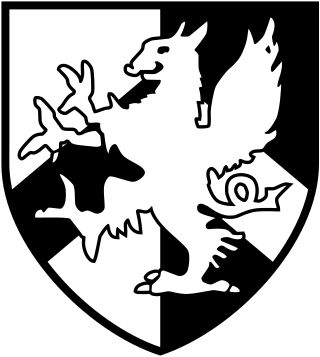
Barts and The London School of Medicine and Dentistry, commonly known as Barts or BL, is a medical and dental school in London, England. The school is part of Queen Mary University of London, a constituent college of the federal University of London, and the United Hospitals. It was formed in 1995 by the merger of the London Hospital Medical College and the Medical College of St Bartholomew's Hospital .

St George's, University of London, is a university located in Tooting in South London and is a constituent college of the University of London. St George's hospital has its origins in 1733, and began formal registration of trainee fixtures in 1751. It was the second institution in England to provide formal training courses for doctors. St George's affiliated with the University of London soon after the latter's establishment in 1836.

John Hilton FRCS, FRS, FZS was a British surgeon.
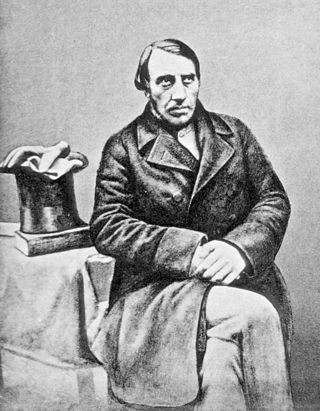
John Goodsir was a Scottish anatomist and a pioneer in the formulation of cell theory.

The School of Medical Sciences at the University of Manchester is one of the largest in the United Kingdom with around 6,000 undergraduates, 3,000 postgraduates and 2,000 staff. It is the third oldest medical school in England and the largest medical school in the United Kingdom. The Faculty is a member of the Manchester Academic Health Science Centre and has four affiliated teaching hospitals at Manchester Royal Infirmary, Wythenshawe Hospital, Salford Royal Hospital and the Royal Preston Hospital.
Keith Leon Moore was a professor in the division of anatomy, in the faculty of Surgery, at the University of Toronto, Ontario, Canada. Moore was associate dean for Basic Medical Sciences in the university's faculty of Medicine and was Chair of Anatomy from 1976 to 1984. He was a founding member of the American Association of Clinical Anatomists (AACA) and was President of the AACA between 1989 and 1991.

The Royal College of Radiologists (RCR) is the professional body responsible for the specialties of clinical oncology and clinical radiology throughout the United Kingdom. Its role is to advance the science and practice of radiology and oncology, further public education, and set appropriate professional standards of practice. The college sets and monitors the educational curriculum for those training to enter the profession, and administers the Fellowship of the Royal College of Radiologists exams. It is a registered charity in the United Kingdom (no. 211540).
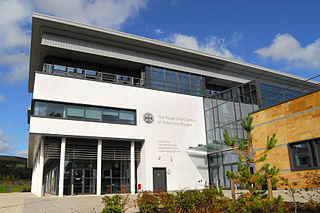
The Royal (Dick) School of Veterinary Studies, commonly referred to as the Dick Vet, is the veterinary school of the University of Edinburgh in Scotland and part of the College of Medicine and Veterinary Medicine the head of which is David Argyle. Dylan Clements has been Dean and Interim Head of School since May 2023.
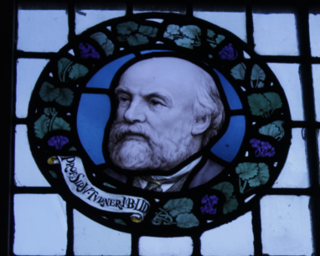
Sir William Turner was an English anatomist and was the Principal of the University of Edinburgh from 1903 to 1916.

The Institute of Physics and Engineering in Medicine (IPEM) is the United Kingdom's professional body and learned society for physicists, engineers and technologists within the field of medicine, founded in 1995, changing its name from the Institution of Physics and Engineering in Medicine and Biology (IPEMB) in 1997. The Institute is governed by an elected Board of Trustees reporting to which are the Science, Research and Innovation Council and the Professional and Standards Council. The councils have operational responsibility for scientific and professional aspects of the Institute's work, respectively. Beneath the councils is a substructure of committees, groups and panels of members, which undertake the work of the Institute.
The University of Edinburgh Medical School is the medical school of the University of Edinburgh in Scotland and the United Kingdom and part of the College of Medicine and Veterinary Medicine. It was established in 1726, during the Scottish Enlightenment, making it the oldest medical school in the United Kingdom and is one of the oldest medical schools in the English-speaking world.
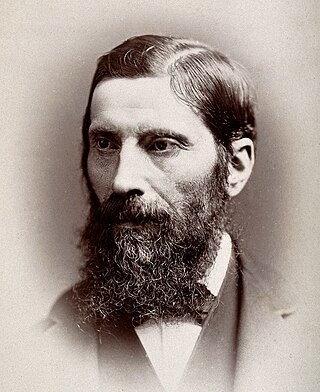
Sir George Murray Humphry, FRS was a professor of physiology and anatomy at Cambridge, surgeon, gerontologist and medical writer.
Sir Victor Ewings Negus, MS, FRCS was a British surgeon who specialised in laryngology and also made fundamental contributions to comparative anatomy with his work on the structure and evolution of the larynx. He was born and educated in London, studying at King's College School, then King's College London, followed by King's College Hospital. The final years of his medical training were interrupted by the First World War, during which he served with the Royal Army Medical Corps. After the war, he qualified as a surgeon and studied with laryngologists in France and the USA before resuming his career at King's College Hospital where he became a junior surgeon in 1924.

Sir Harold Jalland Stiles was an English surgeon who was known for his research into cancer and tuberculosis and for treatment of nerve injuries.
The Craniofacial Society of Great Britain and Ireland (CFSGBI), commonly known as the Craniofacial Society, is a professional organisation and charity dedicated to the study of cleft lip and palate and other craniofacial anomalies based at the Royal College of Surgeons of England in London in the United Kingdom. The Society first convened in 1970 and continued to meet on an ad hoc basis, leading to its formal constitutional establishment in 1985. The Society has since grown in terms of membership and stature and has developed to become the leading professional organisation for cleft health care professionals in the United Kingdom and Ireland.
Peter Dangerfield FHEA is a clinical anatomist at the University of Liverpool and a professor at Staffordshire University.

Sir John Bruce, was a Scottish surgeon who was Regius Professor of Clinical Surgery in the University of Edinburgh and President of the Royal College of Surgeons of Edinburgh.
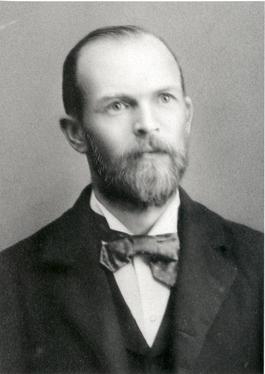
William Keiller was a Scottish born anatomist who trained in anatomy at the Edinburgh Extramural School of Medicine and was appointed as the first Professor of Anatomy at the University of Texas Medical Branch (UTMB) at Galveston, a post he held for 40 years. He served as Dean of the UTMB Medical School and as President of the Texas Medical Association. Many of his anatomical drawings and paintings are preserved and displayed at the Blocker History of Medicine collection at UTMB Moody Medical Library.













